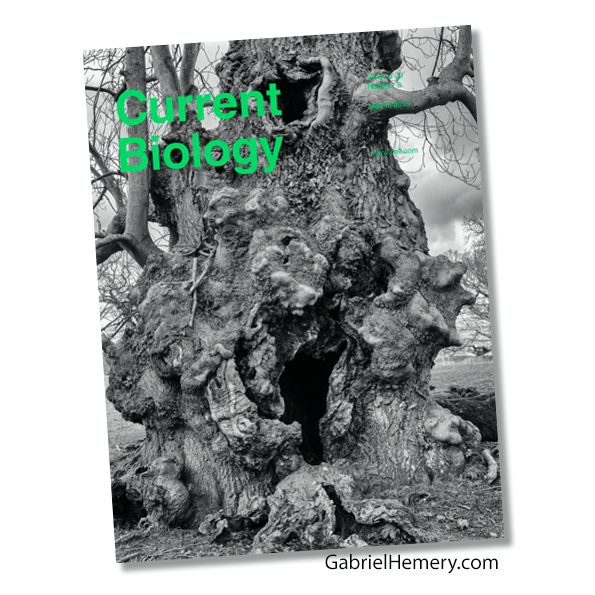Given the massive media interest in the paper I co-authored about ash dieback (published last week in Current Biology) — 280 news channels, magazines, and newspapers, and counting— it was easy to overlook that the journal selected one of my tree photographs for the cover of the issue.

I photographed the beautiful ancient ash tree (Fraxinus excelsior) growing on a traditional estate and parkland in Herefordshire, England, while I was researching for my book The New Sylva. I shot the image with a Panasonic Lumix micro four-thirds format camera on a tripod, and a 45mm (90mm equivalent in 35mm) lens, using a tripod for support.
The tree is an ancient pollard, meaning that the tree was once cut regularly to yield timber for firewood and other purposes. A pollard cut is always made at shoulder height so that cattle or deer cannot graze the tender shoots which grow soon after pollarding. Today, the tree’s hollow bole is riddled with holes and stumps from former branches, providing a haven for insects and other biodiversity.
Read more about my Tree Photography.
 This work is licensed under a Creative Commons Attribution- NonCommercial- NoDerivs 3.0 United States License.
This work is licensed under a Creative Commons Attribution- NonCommercial- NoDerivs 3.0 United States License.
